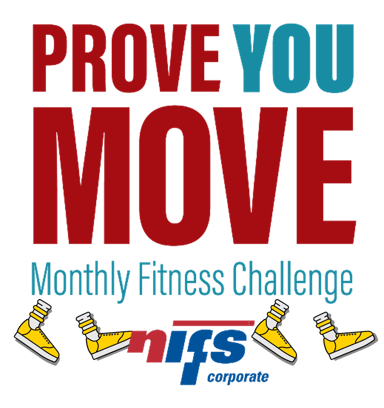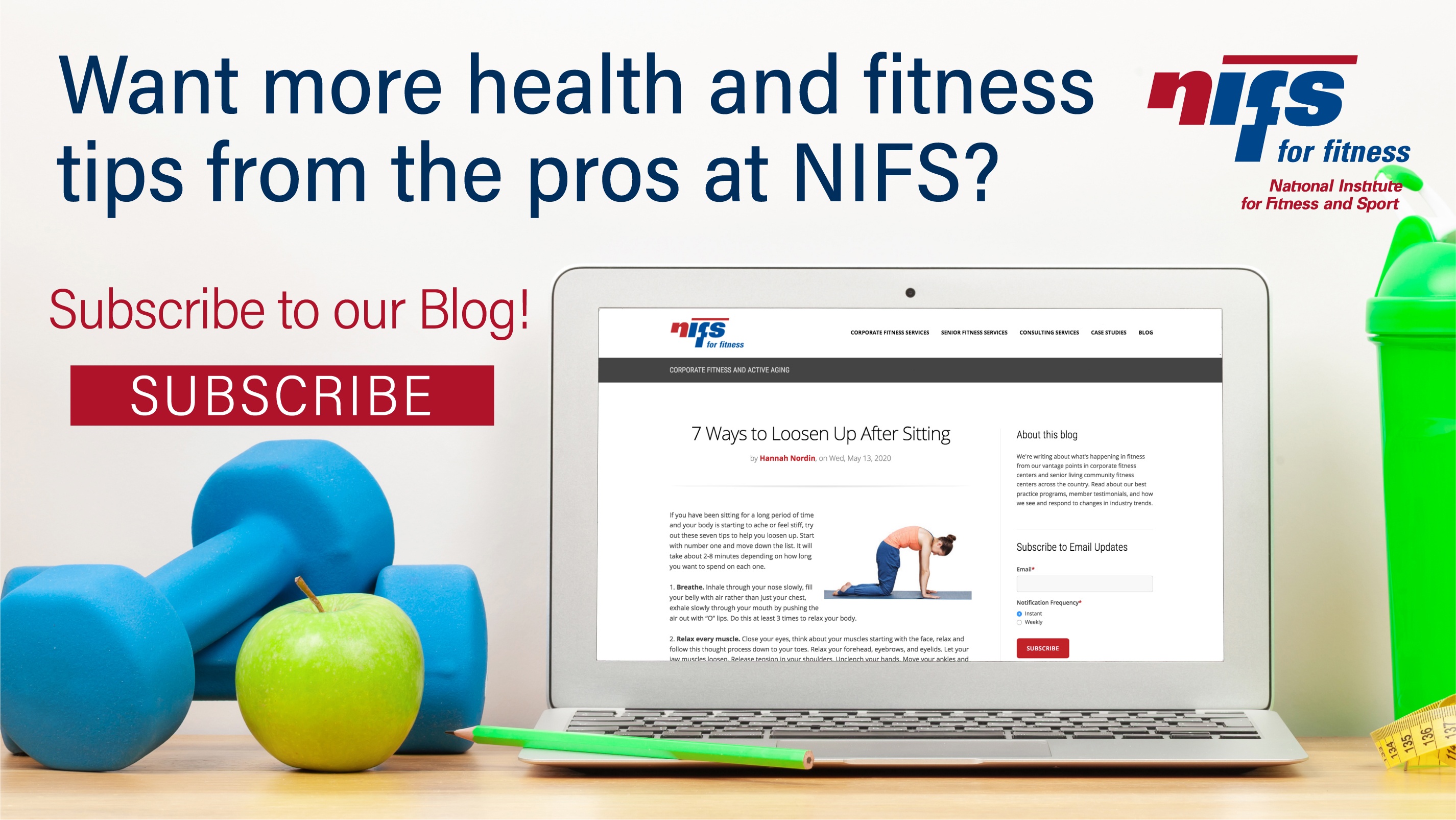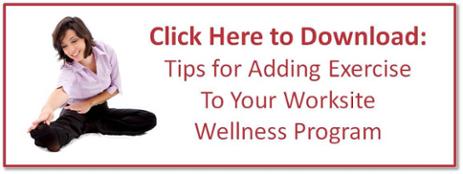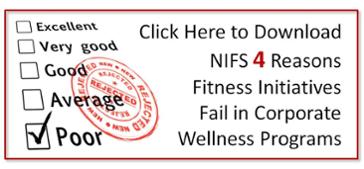 It's hard for me to believe that the first season of the reality show Biggest Loser aired in 2004. The popularity of that show has inspired all manner of weight loss competitions held under the banner of workplace health. Over the years, as a corporate fitness partner for businesses across the US, we've hosted our share of weight loss challenges. Sometimes the program was straight up 100% about weight loss. Other times, the challenge would have a lot of pieces and participants could choose a weight loss component or another element as their focus.
It's hard for me to believe that the first season of the reality show Biggest Loser aired in 2004. The popularity of that show has inspired all manner of weight loss competitions held under the banner of workplace health. Over the years, as a corporate fitness partner for businesses across the US, we've hosted our share of weight loss challenges. Sometimes the program was straight up 100% about weight loss. Other times, the challenge would have a lot of pieces and participants could choose a weight loss component or another element as their focus.
All of it was well-intentioned, but as I've come to learn, we may have done more harm than good. That said, we don't offer those kinds of programs anymore, and here's why:
Weight loss challenges are based on bad science.
Such programs are typically short term (6-8 weeks) and focus almost exclusively on calories. The idea is that if you consume fewer calories than you burn, you'll lose weight. (Or, as we fitness folks prefer: burn more calories than you take in.) On paper, the math makes perfect sense. But the reality of calories in versus calories out as it relates to body weight is far more complicated. Fitness professionals often assume that people are fat because they either aren't moving their bodies enough or they're eating too many calories. Fix one or both of those and the weight will come right off.
In fact, the weight may come off for the duration of the challenge. Sustained weight loss is also a possible outcome (there are success stories out there), but it's not a likely one.
[Read More: The Long Strange History of Fad Diets]
Weight loss challenges motivate the wrong health behaviors.
Early in my career one of my most memorable encounters with a fitness center member occurred when she came in for her appointment to talk about an exercise plan tailored to her goals. Weight loss was her primary goal so we started talking about what might be a reasonable initial target. Quickly into the appointment, she dissolved into tears and through the rest of our conversation, we didn't talk about exercise, we talked about her body image and how deeply connected that was to her self worth.
That kind of desperation lends to poor health behavior choices when we're talking about weight; it's not a stretch to go from a weight loss challenge at work to dysfunctional eating habits. The restrictive nature of the challenges often leaves participants grumbling about when they can eat their next cheeseburger. I'd cringe when I heard something like that. I'm not anti-cheeseburger, cheesecake, or cheese for that matter. I am against the idea of labeling foods into good/bad categories as a strategy for eating better, and I am against the idea of restriction as a tactic for improving health.
Weight loss challenges perpetuate a negative body image narrative.
The story I shared above about the member crying in my office because of her weight wasn't an isolated incident. It happened regularly. And while I was honored that people would feel comfortable getting real with me, I also felt horribly ill-equipped to counsel, recommend, or even respond. (There was no training for this in my bachelor's or master's programs). So I practiced empathetic listening because it was the only tool I had in my toolbox. After several consults like this, I adopted a mantra: "Your weight on the scale is not related to your value as a human being" in the hopes that my members would internalize a tiny piece of that to understand that regardless of their weight, body fat, jean size, or relationship to food they had immense value to me and others in their lives.
When we focus on excess weight as something that MUST be addressed, we imply that individuals who aren't at a "healthy body weight" must need fixing. That's a pretty rich message coming from a group of professionals who love exercise so much, we choose to do it for a living.
So what do we do when someone comes to us with weight loss questions?
We will still work with individuals on reasonable weight loss goals if they come to us 1:1 for that kind of support. But, we do it from the foundation message that good health is primary. If weight loss occurs as a natural outcome of healthy choices, then so be it.
We do still get asked by businesses if we'll help them run their weight loss challenge. The answer is no. Sometimes they'll respond to other creative health-related programming and other times, they're committed to their Biggest Loser-style weight loss competition and we have to bow out.
* * *
If you're looking for a corporate fitness partner who is committed to helping your employees live well and work well, click below to find out how we can help.

 In corporate fitness we find that members love a good team challenge. Whether that's creating teams of 4-5 people to work toward a goal or all coming together to reach a finish line. Our popular 500 Challenge is back, and employees are revving up those tennis shoes to clock miles this next month! We know the benefits of moving more each day with be achieved, but the fun in building community is just as beneficial. Join us and rev up your body and get moving this month!! Go big and strive to hit 100 miles in one month. Feeling intimidated by the big number? Look no further, here are a few tips and tricks to accomplish the feat!
In corporate fitness we find that members love a good team challenge. Whether that's creating teams of 4-5 people to work toward a goal or all coming together to reach a finish line. Our popular 500 Challenge is back, and employees are revving up those tennis shoes to clock miles this next month! We know the benefits of moving more each day with be achieved, but the fun in building community is just as beneficial. Join us and rev up your body and get moving this month!! Go big and strive to hit 100 miles in one month. Feeling intimidated by the big number? Look no further, here are a few tips and tricks to accomplish the feat!

 As organizations are planning to reopen their offices in the weeks and months ahead, many questions are swirling around what the new office landscape will look like for both employers and employees. Some organizations are telling their employees if they can work from home full-time, they’d like for them to continue doing so permanently. Others can’t wait to return to normal office operations while also recognizing a hybrid telecommuting model will likely be the outcome.
As organizations are planning to reopen their offices in the weeks and months ahead, many questions are swirling around what the new office landscape will look like for both employers and employees. Some organizations are telling their employees if they can work from home full-time, they’d like for them to continue doing so permanently. Others can’t wait to return to normal office operations while also recognizing a hybrid telecommuting model will likely be the outcome.  This month our corporate members are encouraged to pick a goal of 5,000 or 10,000 steps per day to kick of July’s Prove YOU Move Fitness Challenge. Some people cringe at the thought of 10,000 steps per day, but it isn’t just intentional exercise. Have you ever considered how many steps you actually take in a given day? How often are you moving throughout the office or your house? You might actually surprise yourself. Most phones have a Health App, or you can add a step tracker to your smart phone. If you keep your phone on your body throughout the day, it will calculate your movement and track your steps. As you start digging into your phone, don’t get down on yourself when you discover how little you possibly move, remember your phone must be on your body throughout the day to get the best estimate.
This month our corporate members are encouraged to pick a goal of 5,000 or 10,000 steps per day to kick of July’s Prove YOU Move Fitness Challenge. Some people cringe at the thought of 10,000 steps per day, but it isn’t just intentional exercise. Have you ever considered how many steps you actually take in a given day? How often are you moving throughout the office or your house? You might actually surprise yourself. Most phones have a Health App, or you can add a step tracker to your smart phone. If you keep your phone on your body throughout the day, it will calculate your movement and track your steps. As you start digging into your phone, don’t get down on yourself when you discover how little you possibly move, remember your phone must be on your body throughout the day to get the best estimate.
 When waking up early in the morning, it can be extremely difficult to make it through a morning workout by yourself or perhaps you may not push yourself as hard through the last round of squats as you power through alone. There is a quite a bit that can be said about exercising in a group and how it births motivation.
When waking up early in the morning, it can be extremely difficult to make it through a morning workout by yourself or perhaps you may not push yourself as hard through the last round of squats as you power through alone. There is a quite a bit that can be said about exercising in a group and how it births motivation..jpg?width=409&name=Handing%20out%20brochures%20GettyImages-75675785%20(1).jpg) Health Fairs have become a standard offering as part of corporate wellness programs and it’s common for our staff to coordinate these events. Because traditional health fairs have been around for so long, we place a lot of emphasis on being innovative when organizing experiences. Without a creative approach, you get the same old, boring fair with the same vendors, the same pamphlets, and the same cheap pedometers/stress balls/water bottles. Still, when you’re coordinating your seventh health fair, it’s tough to come up with something new. Ultimately, health Fairs are about education so here are a few ideas on how you can give your event a breath of fresh air.
Health Fairs have become a standard offering as part of corporate wellness programs and it’s common for our staff to coordinate these events. Because traditional health fairs have been around for so long, we place a lot of emphasis on being innovative when organizing experiences. Without a creative approach, you get the same old, boring fair with the same vendors, the same pamphlets, and the same cheap pedometers/stress balls/water bottles. Still, when you’re coordinating your seventh health fair, it’s tough to come up with something new. Ultimately, health Fairs are about education so here are a few ideas on how you can give your event a breath of fresh air.
 It's hard for me to believe that the first season of the reality show Biggest Loser aired in 2004. The popularity of that show has inspired all manner of weight loss competitions held under the banner of workplace health. Over the years, as a
It's hard for me to believe that the first season of the reality show Biggest Loser aired in 2004. The popularity of that show has inspired all manner of weight loss competitions held under the banner of workplace health. Over the years, as a 
.jpg?width=392&height=221&name=Exercise%20Sticky%20Note%20GettyImages-809071406%20(1).jpg) There is more and more discussion in corporate wellness today about doing wellness for (with?) employees,
There is more and more discussion in corporate wellness today about doing wellness for (with?) employees, 


 During the holiday season, making consistent visits to the Fitness Center can be a challenge. Most gyms see a drop in attendance as members take time off for vacation or travel to visit family. They are consumed with Christmas shopping, baking, and entertaining.
During the holiday season, making consistent visits to the Fitness Center can be a challenge. Most gyms see a drop in attendance as members take time off for vacation or travel to visit family. They are consumed with Christmas shopping, baking, and entertaining. 